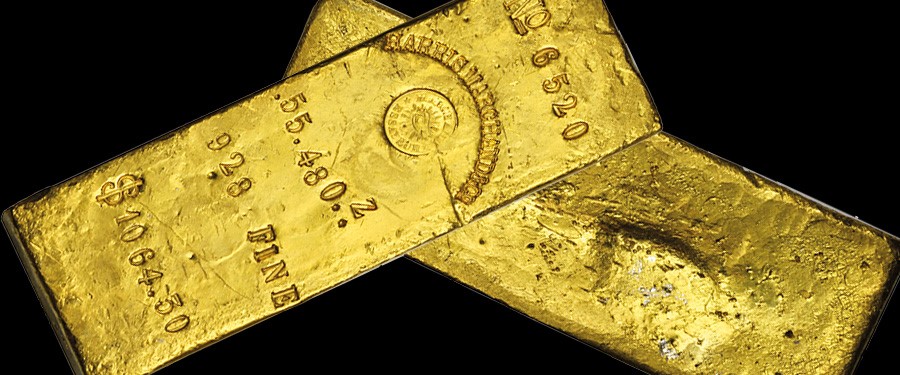
It was a dark and stormy night back on
Saturday, September 12, 1857. Far off the coast of North Carolina the S.S. Central
America, carrying several hundred passengers and millions of dollars in
gold coins and ingots, was on its way from Panama to New York City, having
taken aboard the people and cargo at the port of Aspinwall. The passengers and
treasure had connected from San Francisco to Panama City on the Pacific side,
crossed land on the 48-mile-long Panama Railroad, and were now on their way
home. In the days before weather forecasting was a reality, when the storm
arose a few days earlier it was thought to be a gale that would pass quickly.
Matters worsened, turned into a tempest, and at 8:00 that evening the ship
slipped beneath the waves, taking with it the majority of passengers and all of
the cargo.
Fast forward to the late 20th century, when
Tommy Thompson and Bob Evans began to study the lost ship. Using maps,
estimates of wind velocity, data on currents, and other information, they
mapped out an area containing hundreds of square miles far off the coast, where
the ship may have been lost. After tracking back and forth with sonar and other
equipment they came across several prospects, finally the remnants of a
side-wheel! Not long afterward the ship’s bell, marked with the name, was
brought to the surface, confirming the find. The recovery involved a specially
crafted robotic explorer, Nemo, launched from a mother ship, which went
down to the depths and found what was called a “garden of gold”! Double eagles,
octagonal gold slugs, and ingots were strewn about the sea floor. It was beyond
believable.
In time the treasure was brought to the surface,
and after various processes it was put in the hands of Dwight N. Manley,
manager of the California Gold Marketing Group, to which I [Dave Bowers] and
Chris Karstedt lent our help and suggestions. A facsimile of the vessel’s side
“The Ship of Gold,” was constructed, and offered visitors a chance to look
through “portholes” and see gold coins, artifacts, and more, surrounded by
old-time pictures, Gold Rush newspapers and the like, while nearby a little
theater showed a movie of the recovery operation. Over 400 gold ingots were
found and over 7,500 coins, the likes of which had never been seen before. In
fact, the total weight of the recovered gold ingots from the S.S. Central
America was hundreds of times more than the total of all Gold Rush ingots
known to exist before, including those in the Smithsonian Institution and in
private collections.
Featured in Stack’s Bowers Galleries August
2021 Showcase Auction is a 55.48 ounce gold Harris, Marchand & Company
rectangular gold ingot marked with Serial Number 6520. This salvaged item is
0.928 fine gold and has a $1,064.30 contemporary value. There were only 38 ingots
by Harris, Marchand & Company among the 400 ingots discovered. The
presently offered example is among the largest and choicest in existence. This
is the very first time it has publicly appeared on the market.
Don’t miss your chance to own this piece of
history when it comes up for auction in the Stack’s Bowers Galleries Official
Auction of the ANA, taking place August 16-21, 2021.





